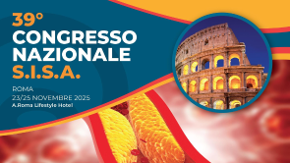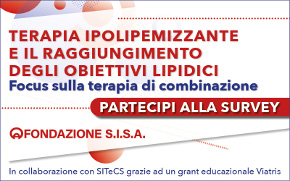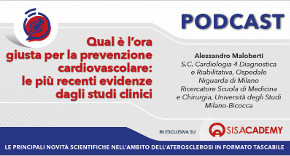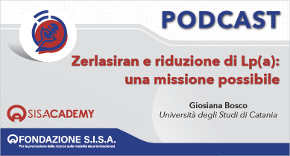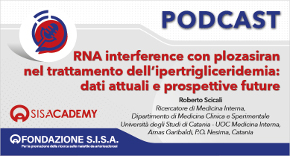 Rivista in lingua italiana
Rivista in lingua italiana
riservata ai Soci SISA
Ultimo numero:
Anno 16 • N.1/2025
SISANews
Calcio coronarico e aterosclerosi nello studio MESA
Analizzando la popolazione dello studio MESA, uno studio prospettico di coorte multietnico di circa 6800 soggetti di età compresa tra 45 e 84 anni, senza CVD clinica al basale, è stata valutata la relazione tra calcio coronarico (CAC) ed incidenza di eventi cardiovascolari su base aterosclerotica utilizzando modelli di regressione di Cox aggiustati per diverse covariate, tra cui età, razza/etnia, sesso, istruzione, indice di massa corporea, valori pressori, livelli lipidici e glicemici, terapie farmacologiche. I tassi di eventi in soggetti con CAC = 0 unità di Agatston variavano dall'1,3% al 5,6%, mentre per quelli con CAC >300 i tassi di eventi a 10 anni variavano dal 13,1% al 25,6%. A 10 anni di follow-up, tutti i partecipanti con CAC >100 avevano un rischio >7,5%, a prescindere dal sottogruppo demografico. Per ogni raddoppio di CAC, è stato stimato un incremento relativo del 14% nel rischio cardiovascolare, mantenendo tutti gli altri fattori di rischio costanti.
![]()
Ten-year association of coronary artery calcium with atherosclerotic cardiovascular disease (ASCVD) events: the multi-ethnic study of atherosclerosis (MESA)
Budoff MJ, Young R, Burke G, Jeffrey Carr J, Detrano RC, Folsom AR, Kronmal R, Lima JAC, Liu KJ, McClelland RL, Michos E, Post WS, Shea S, Watson KE, Wong ND.
Eur Heart J 2018;39:2401-2408
Aims: While coronary artery calcium (CAC) has been extensively validated for predicting clinical events, most outcome studies of CAC have evaluated coronary heart disease (CHD) rather than atherosclerotic cardiovascular disease (ASCVD) events (including stroke). Also, virtually all CAC studies are of short- or intermediate-term follow-up, so studies across multi-ethnic cohorts with long-term follow-up are warranted prior to widespread clinical use. We sought to evaluate the contribution of CAC using the population-based MESA cohort with over 10 years of follow-up for ASCVD events, and whether the association of CAC with events varied by sex, race/ethnicity, or age category.
Methods and results: We utilized MESA, a prospective multi-ethnic cohort study of 6814 participants (51% women), aged 45-84 years, free of clinical CVD at baseline. We evaluated the relationship between CAC and incident ASCVD using Cox regression models adjusted for age, race/ethnicity, sex, education, income, cigarette smoking status, low-density lipoprotein cholesterol, high-density lipoprotein cholesterol, diabetes, lipid-lowering medication, systolic blood pressure, antihypertensive medication, intentional physical exercise, and body mass index. Only the first event for each individual was used in the analysis. Overall, 500 incident ASCVD (7.4%) events were observed in the total study population over a median of 11.1 years. Hard ASCVD included 217 myocardial infarction, 188 strokes (not transient ischaemic attack), 13 resuscitated cardiac arrest, and 82 CHD deaths. Event rates in those with CAC = 0 Agatston units ranged from 1.3% to 5.6%, while for those with CAC > 300, the 10-year event rates ranged from 13.1% to 25.6% across different age, gender, and racial subgroups. At 10 years of follow-up, all participants with CAC > 100 were estimated to have >7.5% risk regardless of demographic subset. Ten-year ASCVD event rates increased steadily across CAC categories regardless of age, sex, or race/ethnicity. For each doubling of CAC, we estimated a 14% relative increment in ASCVD risk, holding all other risk factors constant. This association was not significantly modified by age, sex, race/ethnicity, or baseline lipid-lowering use.
Conclusions: Coronary artery calcium is associated strongly and in a graded fashion with 10-year risk of incident ASCVD as it is for CHD, independent of standard risk factors, and similarly by age, gender, and ethnicity. While 10-year event rates in those with CAC = 0 were almost exclusively below 5%, those with CAC ≥ 100 were consistently above 7.5%, making these potentially valuable cutpoints for the consideration of preventive therapies. Coronary artery calcium strongly predicts risk with the same magnitude of effect in all races, age groups, and both sexes, which makes it among the most useful markers for predicting ASCVD risk.

Area Soci
Eventi
39° Congresso Nazionale
 39° Congresso Nazionale
39° Congresso NazionaleRoma, 23-25 novembre 2025
Save the date




 Spring Meeting Gruppi Giovani SID, SIGG, SIIA, SIMI, SIPREC, SISA
Spring Meeting Gruppi Giovani SID, SIGG, SIIA, SIMI, SIPREC, SISARimini, 6-8 aprile 2025
[continua a leggere]
 SISA LIPID ACADEMY - Corso avanzato di lipidologia clinica
SISA LIPID ACADEMY - Corso avanzato di lipidologia clinicaModena, 4-5 Luglio 2024
[continua a leggere]Giornale Italiano Arteriosclerosi
HoFH today
 Rivista Italiana della
Rivista Italiana della
Ipercolesterolemia
Familiare Omozigote
Anno 6 • N.1/2024
Rivista NMCD
Diateca
[continua a leggere]
[continua a leggere]
Newsletter
il vostro indirizzo di posta elettronica
Progetto LIPIGEN
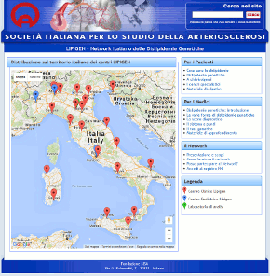
Nuovo sito dedicato al Progetto LIPIGEN
Progetto LIPIGEN - Vecchio portale
E' necessario essere loggati come utente
Lipigen per poter accedere alla pagina
PROject Statin Intolerance SISA
PROSISA – PROject Statin Intolerance SISA
E' necessario essere loggati come utente
PROSISA per poter accedere alla pagina
GILA - Lipoprotein Aferesi
Gruppo Interdisciplinare Lipoprotein Aferesi
(Accesso Gruppo GILA-Lipoprotein Aferesi)
E' necessario essere loggati come utente del Gruppo GILA per poter accedere
Gruppo Interdisciplinare Lipoprotein Aferesi
(Documentazione ad accesso libero)
Pagina informativa per medici e pazienti


